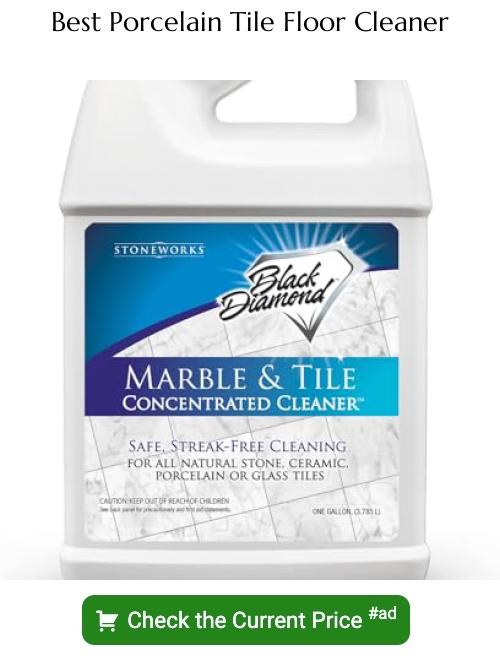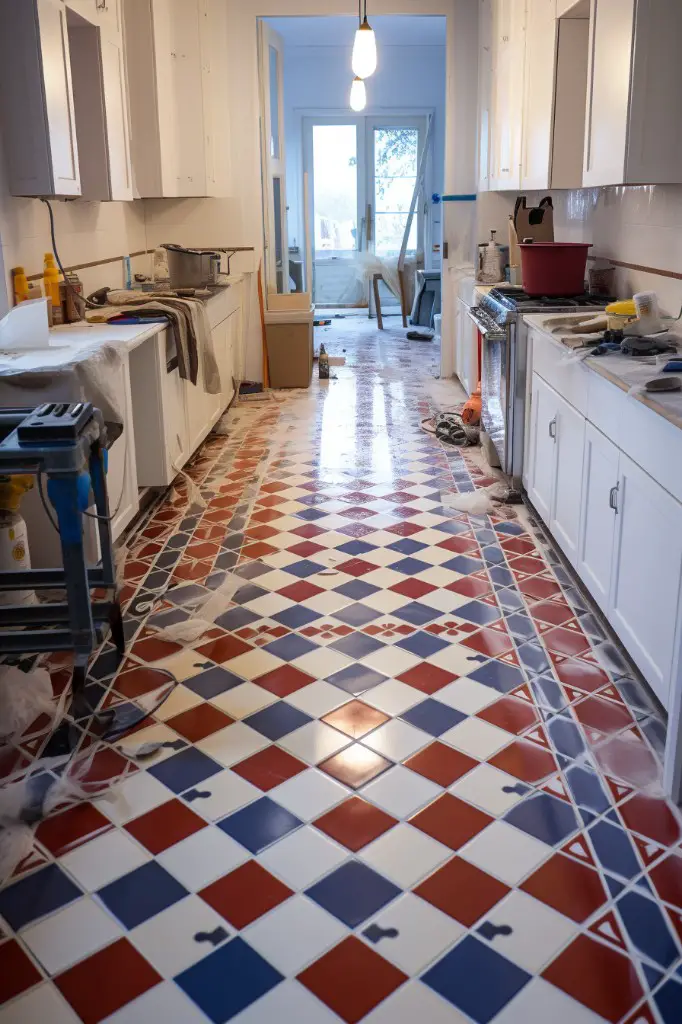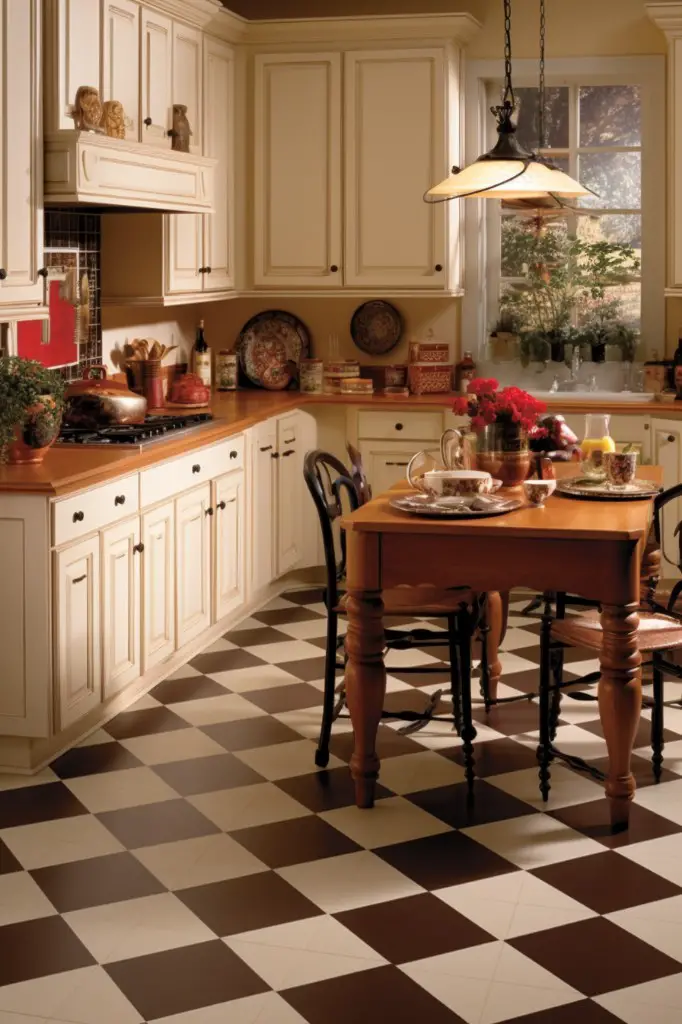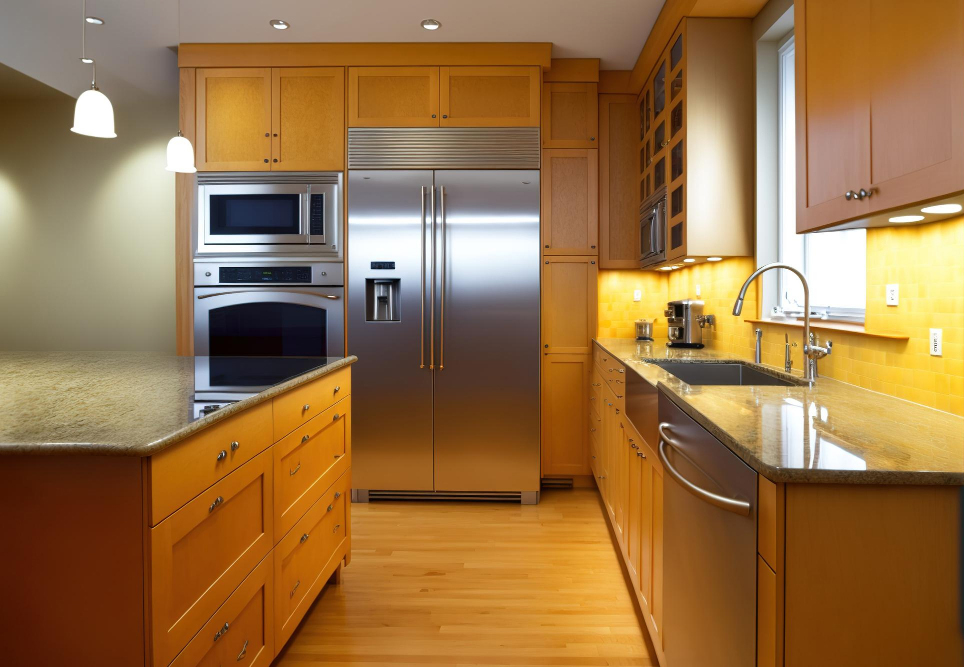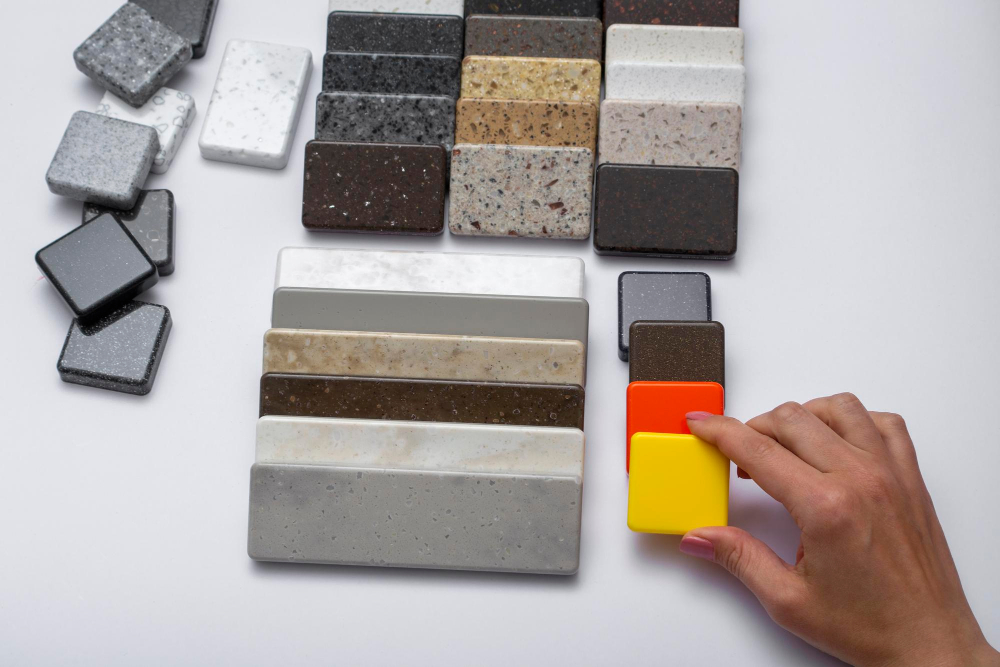Last updated on
Discover the benefits and drawbacks of using polished porcelain tile for your kitchen floors, ensuring you make an informed decision for a stunning and functional space.
The kitchen is the heart of every home, and choosing the right flooring material for it can be quite challenging. With so many options available in the market, it’s easy to get confused about which one to choose.
One popular choice that has been gaining popularity in recent years is polished porcelain tile. But is it a good option for kitchen floors? In this article, we’ll explore the pros and cons of using polished porcelain tiles in your kitchen and help you make an informed decision.
So let’s dive right in!
What's Inside
What Is Polished Porcelain Tile?
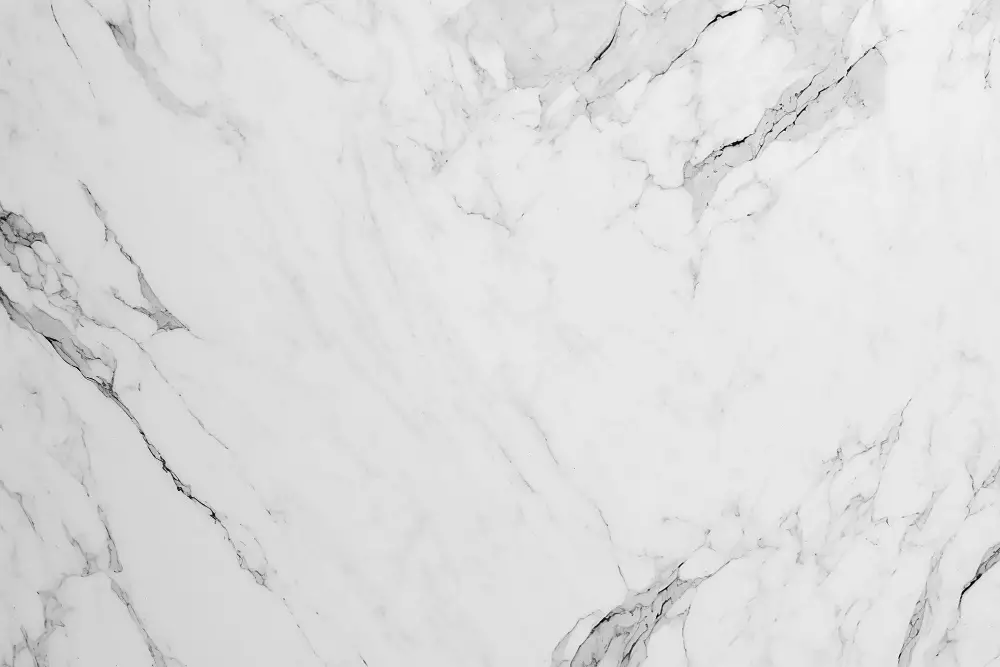
The surface of the tile is then polished to give it a smooth, glossy finish that reflects light beautifully. This process makes the tiles highly resistant to wear and tear, as well as moisture and stains.
Porcelain tiles are made from natural clay materials mixed with other minerals such as feldspar, kaolin, and quartz. They are then shaped into thin slabs using hydraulic presses before being fired in kilns at very high temperatures.
The polishing process gives porcelain tiles their characteristic shine while also making them more impervious to water than unpolished or matte-finished varieties. Polishing also helps reduce porosity which means they absorb less liquid compared with other types of flooring materials like natural stone or wood.
Characteristics of Polished Porcelain Tile

It is made from natural clay, sand, and other minerals that are mixed together to form a paste. The paste is then molded into the desired shape and size before being fired in kilns at extremely high temperatures.
One of the most notable characteristics of polished porcelain tiles is their smooth surface finish. This finish gives them an elegant look that can add sophistication to any kitchen design.
Polished porcelain tiles come in various sizes, shapes, colors, patterns which makes it easy for homeowners to find one that suits their style preferences.
Another characteristic worth noting about polished porcelain tiles is its hardness rating on the Mohs scale – this means they are highly resistant against scratches or chips caused by heavy foot traffic or dropped objects in your kitchen area.
Porcelain Tile Durability
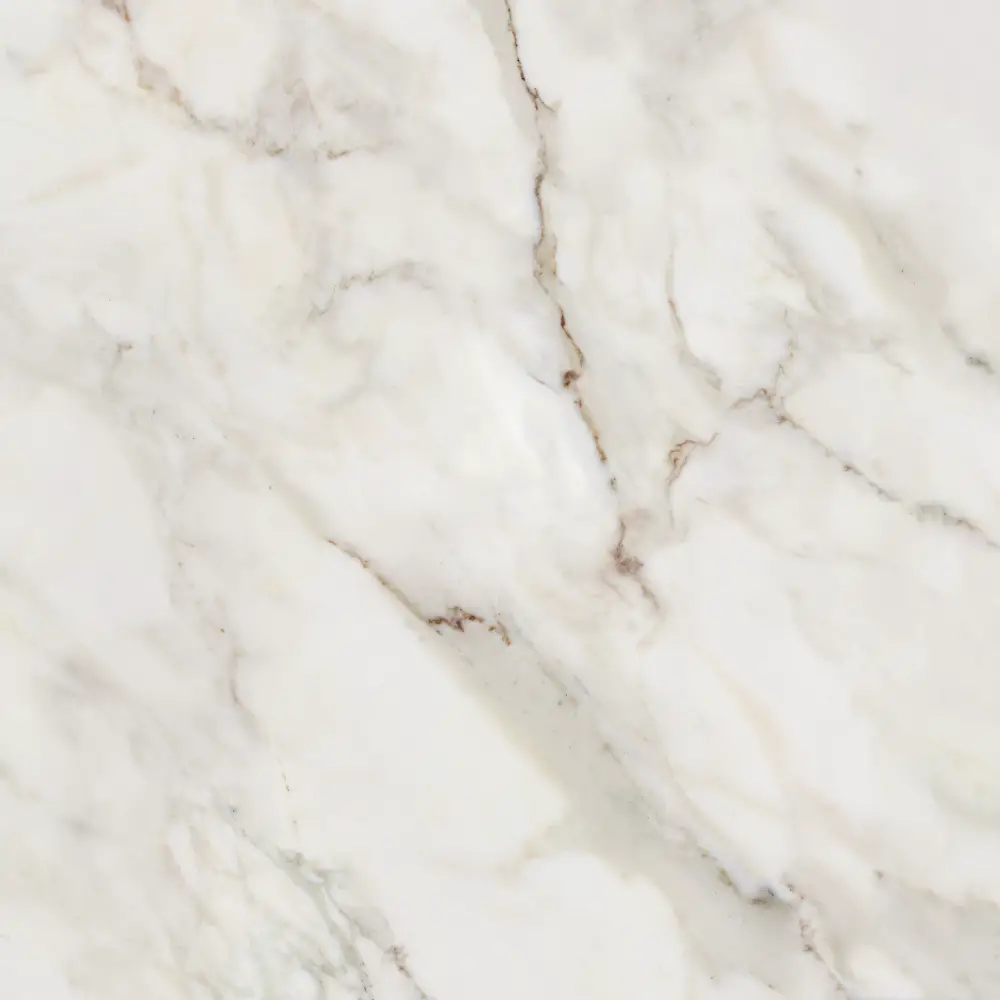
They are made from high-quality materials that make them resistant to wear and tear, making them ideal for high-traffic areas like the kitchen. Porcelain tiles have a low porosity rate, which means they do not absorb moisture easily.
This makes them less prone to cracking or chipping due to temperature changes or exposure to water.
Polished porcelain tiles also have a hard surface that can withstand heavy foot traffic without showing signs of wear quickly. They can last up to 20 years with proper care and maintenance, making it an excellent investment in your home’s value.
However, it’s essential to note that while polished porcelain tile is durable it may still crack if subjected to extreme force or pressure such as dropping heavy objects on the floor surface.
Stain and Scratch Resistance
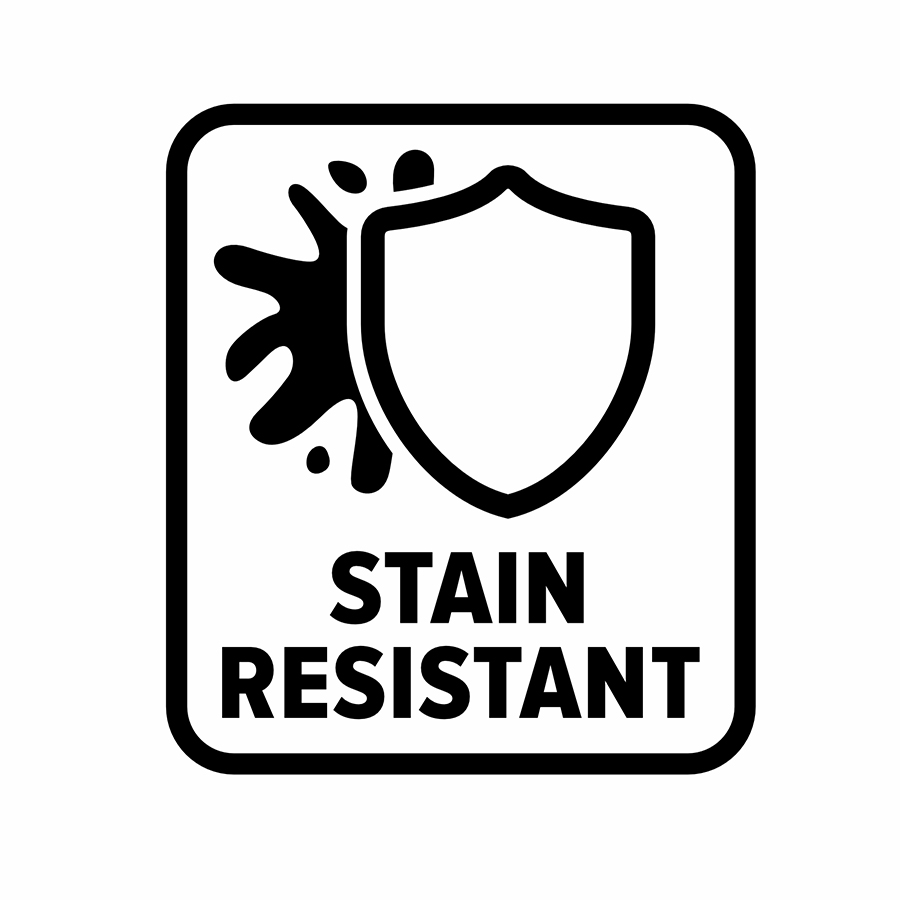
The surface of polished porcelain tiles is non-porous, which means that liquids cannot penetrate it easily. This makes cleaning up spills a breeze as they can be wiped away quickly without leaving any stains or marks.
In addition to being stain-resistant, polished porcelain tiles are also scratch-resistant. They are made from a dense material that can withstand heavy foot traffic without showing signs of wear and tear easily.
However, while they may be resistant to scratches caused by everyday use in the kitchen, they are not entirely scratch-proof.
It’s important to note that even though polished porcelain tile has excellent stain and scratch resistance properties; it still requires proper care and maintenance over time. Avoid using abrasive cleaners or tools when cleaning your floors as these could cause damage over time.
Slip Resistance
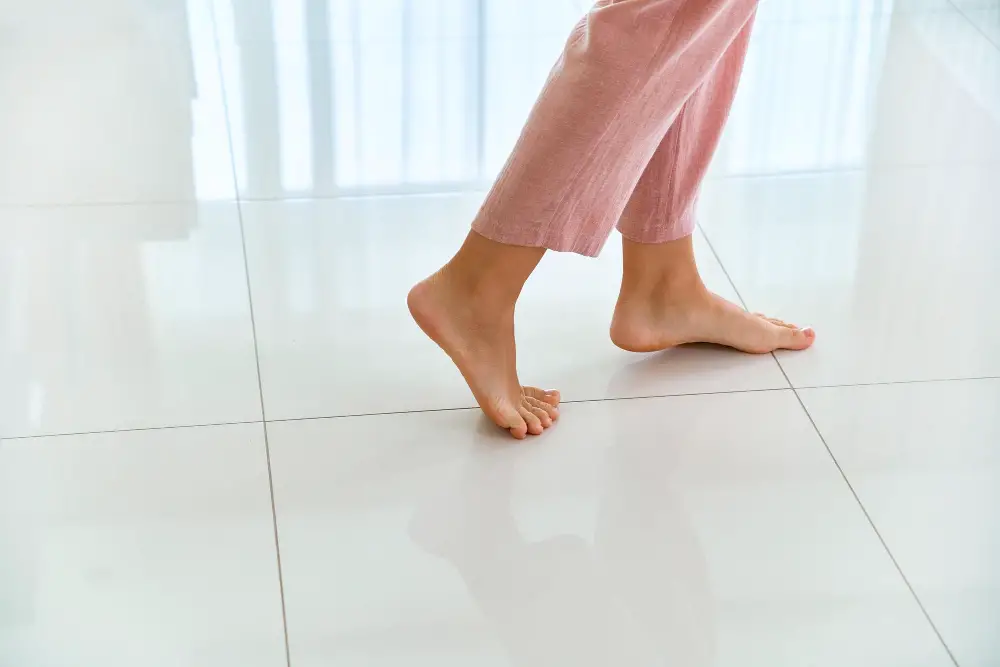
Polished porcelain tile has a smooth surface that can be slippery, especially when wet. However, manufacturers have developed slip-resistant finishes that make polished porcelain tiles safer to use in high-traffic areas like kitchens.
When shopping for polished porcelain tiles, look out for those with textured or matte finishes as they offer better traction and reduce the risk of slips and falls. You can opt for larger-sized tiles as they have fewer grout lines which also reduces the chances of slipping.
It’s important to note that even with slip-resistant finishes on your polished porcelain tile floors; spills should still be cleaned up immediately to avoid accidents. Regular cleaning will also help maintain the slip-resistance properties of your floor over time.
Resistance to Wear and Moisture
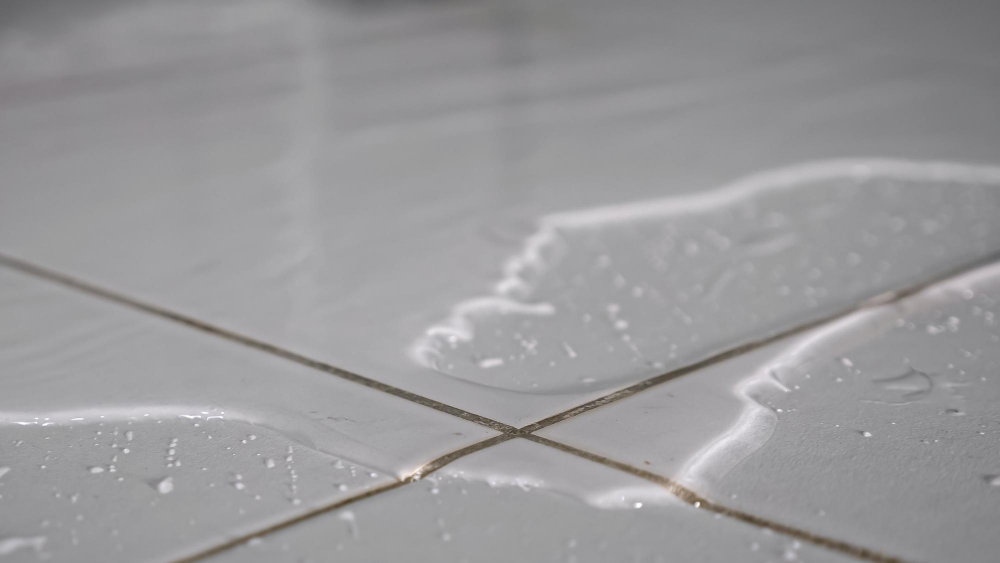
Porcelain tiles are made by firing clay at high temperatures, which makes them incredibly dense and hard-wearing. This density also means that they are highly resistant to water absorption, making them ideal for use in areas with high humidity levels such as kitchens.
Porcelain tiles have a low porosity level of less than 0.5%, which means they absorb very little water or moisture compared to other flooring materials like natural stone or wood. This feature makes polished porcelain tile perfect for kitchen floors where spills and splashes are common occurrences.
The surface of polished porcelain tile is non-porous, meaning it does not allow liquids or stains to penetrate easily into the material’s surface pores. As a result, cleaning up spills on your polished porcelain floor becomes much easier since you can wipe away any liquid without worrying about staining your floor.
Ease of Maintenance
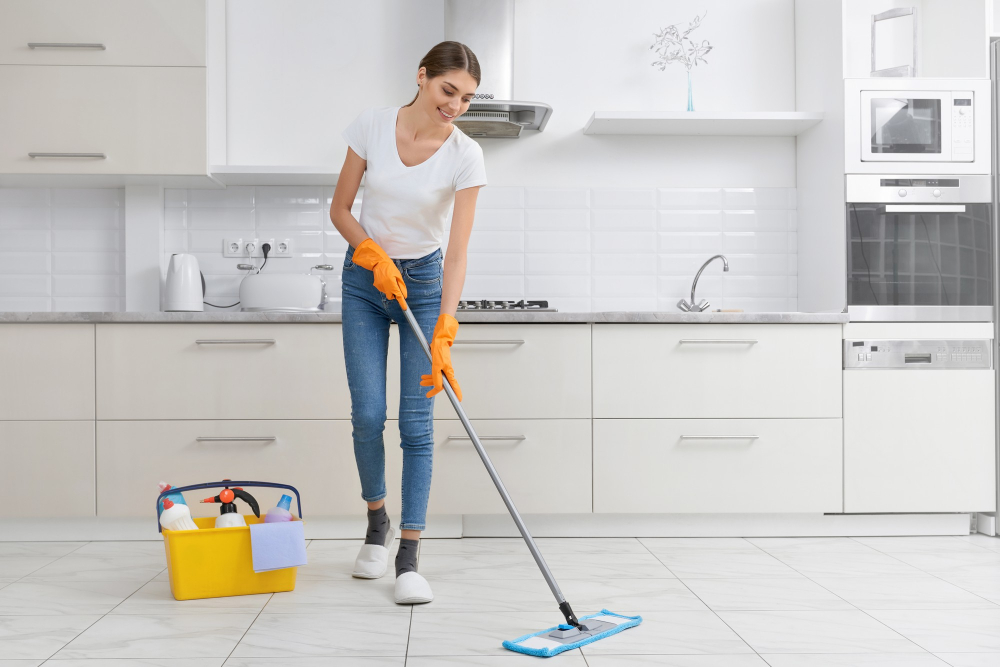
Unlike other flooring materials, polished porcelain tiles are resistant to stains and scratches, making them easy to clean and maintain. You can easily wipe off spills or stains with a damp cloth or mop without worrying about damaging the surface.
Moreover, polished porcelain tiles do not require any special cleaning products or equipment. Regular sweeping and mopping with warm water are enough to keep your kitchen floor looking shiny and new for years.
However, it’s essential to note that while polished porcelain tiles are low-maintenance compared to other flooring options like hardwood floors or carpets, they still require regular cleaning. Neglecting proper maintenance can lead to dirt buildup on the surface over time.
Low Maintenance and Easy Cleaning
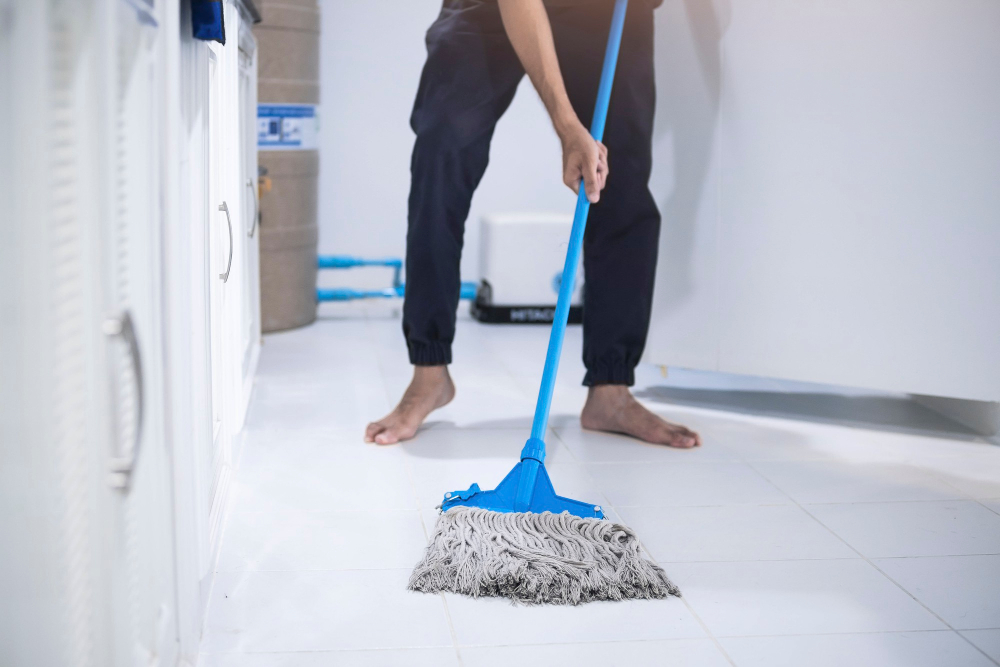
Unlike other flooring materials, polished porcelain tiles do not require any special cleaning products or equipment. All you need to keep them looking great is a damp mop and some mild detergent.
The smooth surface of polished porcelain tiles makes it difficult for dirt, dust, and grime to stick on the surface. This means that you won’t have to spend hours scrubbing your kitchen floor every week.
Moreover, since these tiles are non-porous in nature, they don’t absorb spills or stains easily. So if something spills on your kitchen floor accidentally while cooking or eating meals with family members/friends – all you need is a damp cloth/paper towel (or mop) with some water/detergent solution handy nearby!
Design and Style Options
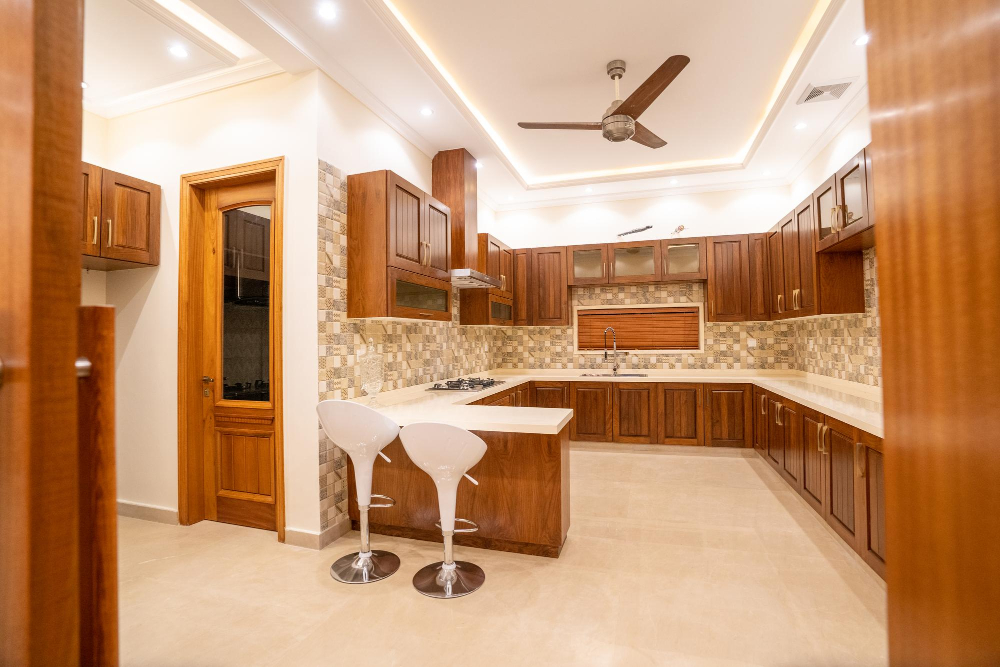
They can mimic the look of natural stone or wood without the maintenance requirements that come with those materials. The polished finish gives them a sleek and modern appearance that works well in contemporary kitchens.
If you prefer a more traditional look, there are also options available with textured surfaces or matte finishes to give your kitchen an old-world charm. You can choose from various sizes as well – large format tiles create an illusion of space while smaller ones add texture to your flooring.
When selecting polished porcelain tile for your kitchen floor, consider factors such as color scheme, cabinet style, countertop material and overall design aesthetic to ensure it complements the rest of your decor seamlessly.
.
The design versatility offered by polished porcelain tile makes it an excellent choice for homeowners looking for both functionality and aesthetics when choosing their kitchen flooring material.
Aesthetics and Style Options
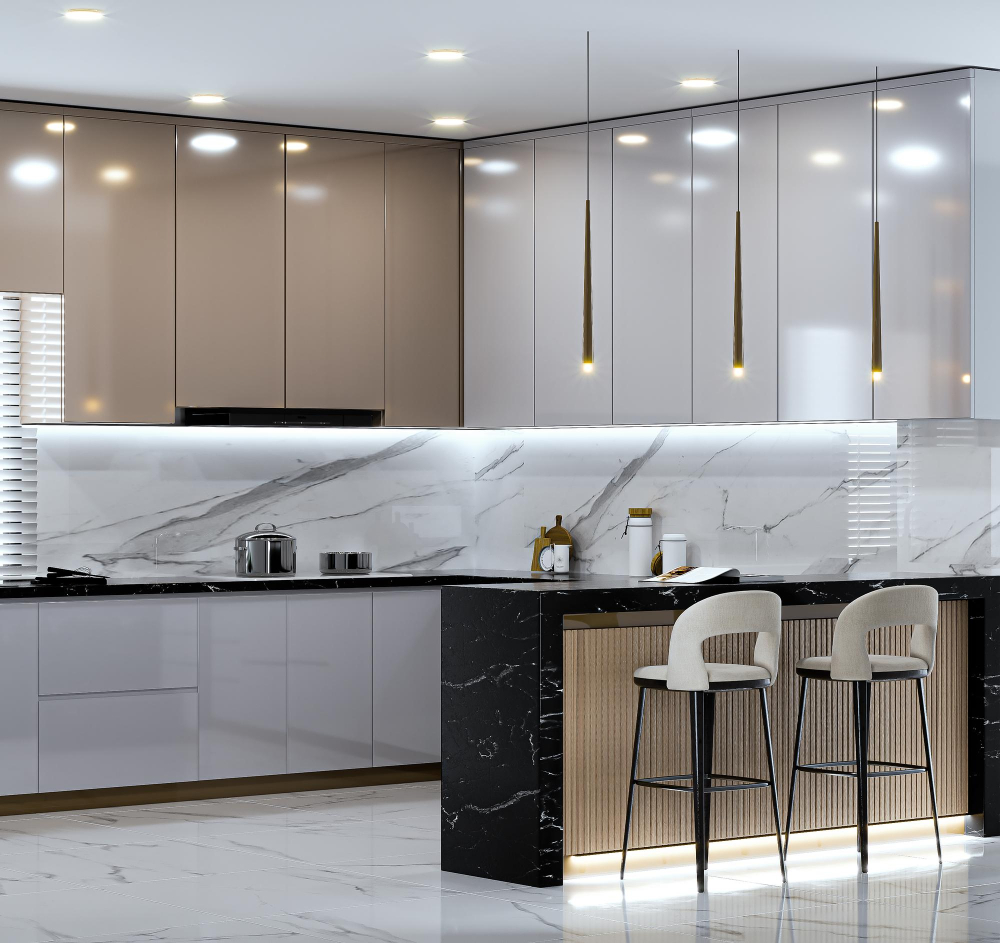
It’s available in a wide range of colors, patterns, and finishes that can mimic the look of natural stone or wood. You can choose from glossy or matte finishes depending on your preference.
Polished porcelain tiles are also available in various sizes and shapes such as square, rectangular, hexagonal or even mosaic designs. This allows you to create unique patterns for your kitchen floor that will make it stand out.
If you’re looking for an elegant look with clean lines and minimal grout joints then large format polished porcelain tiles may be the perfect option for you. They give a seamless appearance while making small kitchens appear larger than they actually are.
Environmental Impact

Polished porcelain tile is made from natural clay and minerals, which makes it a more eco-friendly option than some other types of flooring materials like vinyl or carpet. Porcelain tiles are highly durable and long-lasting, reducing the need for frequent replacements that can contribute to waste.
However, the manufacturing process of polished porcelain tiles requires high energy consumption and produces carbon emissions. It’s essential to choose manufacturers who use sustainable practices in their production processes.
Another aspect worth considering is transportation costs since most polished porcelain tiles are imported from overseas countries such as Italy or Spain. Choosing locally sourced products can help reduce your carbon footprint while supporting local businesses.
Porcelain Tile Installation

The installation process is quite complex and involves several steps, including surface preparation, layout planning, cutting the tiles to size, applying adhesive and grout. One of the biggest challenges with installing porcelain tiles is their weight; they are heavier than other types of flooring materials like vinyl or laminate.
It’s important to hire an experienced contractor who has expertise in handling porcelain tile installations. They will ensure that your floor is installed correctly and meets all safety standards.
Another factor to consider when installing polished porcelain tile floors in your kitchen is cost. Porcelain tiles can be more expensive than other flooring options due to their durability and quality material composition.
Installation Challenges
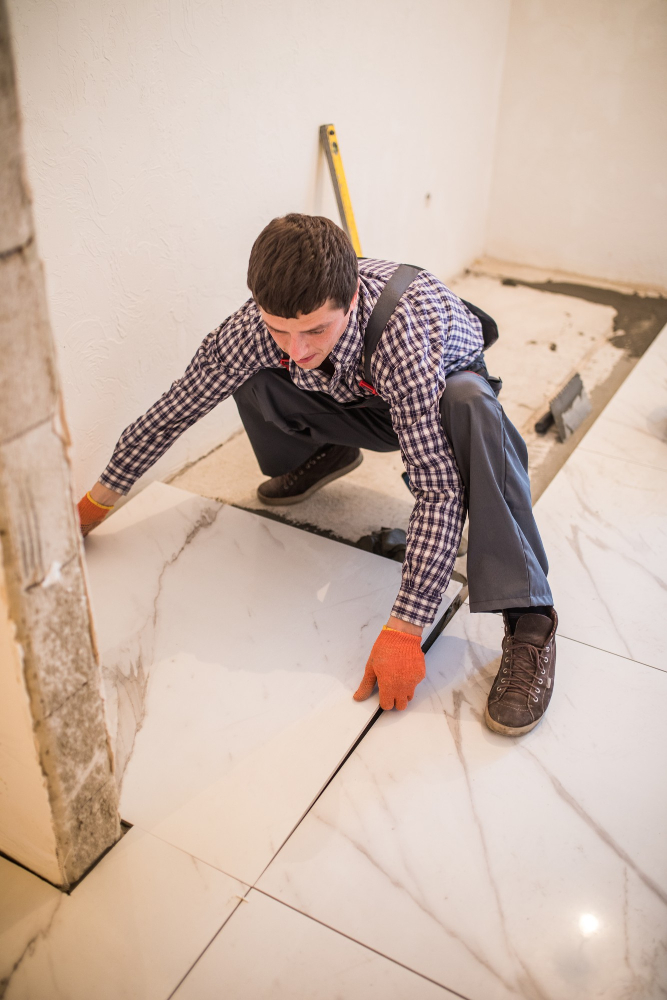
One of the main challenges is that porcelain tiles are heavier than other flooring materials like ceramic or vinyl. This means that your subfloor needs to be strong enough to support their weight.
Another challenge with installing polished porcelain tile in your kitchen is ensuring proper leveling and spacing between each tile. Porcelain tiles have very little give, so if they’re not installed correctly, you may end up with uneven surfaces or gaps between them.
To ensure a successful installation of polished porcelain tiles in your kitchen, it’s best to hire an experienced professional who has worked with this material before. They will know how to properly prepare the subfloor and install each tile evenly while minimizing any potential issues during the process.
Weight Considerations
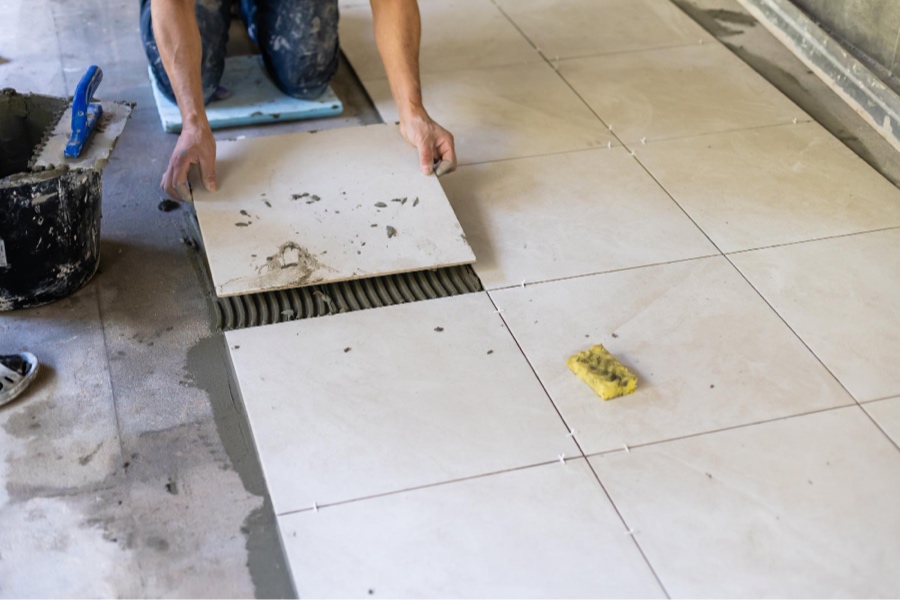
Porcelain tiles are denser and heavier than other flooring materials, which means that they require a sturdy subfloor to support their weight. If you’re planning on installing porcelain tiles over an existing floor, it’s essential to ensure that the subfloor can handle the additional load.
Moreover, if you live in an apartment or have upper-level floors in your home, it’s crucial to check with a structural engineer before proceeding with installation. The added weight of porcelain tile may exceed building codes’ limits for upper-level floors and cause damage or even collapse.
While polished porcelain tile offers many benefits as a kitchen flooring material due to its durability and low maintenance requirements; homeowners must also consider its substantial weight during installation carefully.
Cost Comparison
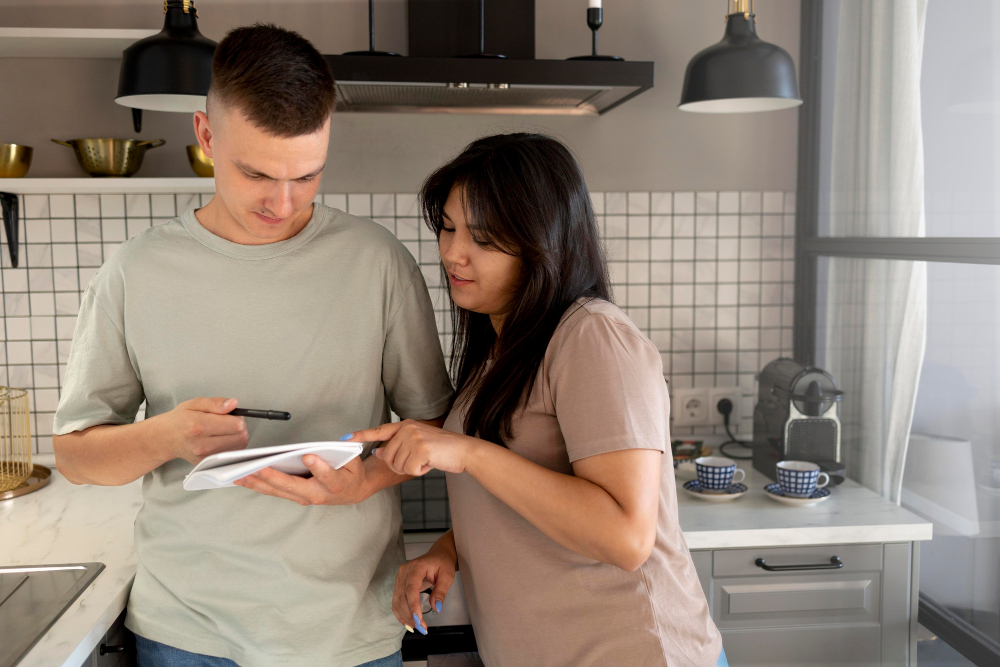
Polished porcelain tile is not the cheapest option available in the market, but it’s also not the most expensive one. The cost of polished porcelain tiles varies depending on several factors such as size, thickness, design complexity and manufacturer.
Compared to other popular kitchen flooring options like hardwood or natural stone tiles, polished porcelain tile can be more affordable while still providing similar durability and aesthetic appeal. However, compared to other types of ceramic or non-porcelain tiles that are less durable than polished porcelain tile but cheaper in price per square foot.
It’s essential to consider all costs associated with installing new floors when making your decision – including materials costs as well as installation fees if you’re hiring professionals for installation services.
Cost Factors

Polished porcelain tile can be more expensive than other types of tiles, such as ceramic or natural stone. However, there are several factors that can affect the cost of polished porcelain tile.
One major factor that affects the cost is the quality and grade of the tile. Higher-quality tiles will have fewer defects and inconsistencies in color and pattern but may come at a higher price point.
Another important consideration when it comes to costs is installation fees. Installing polished porcelain tiles requires specialized tools and expertise which means you’ll need to hire professional installers who charge for their services.
The size of your kitchen floor area also plays an essential role in determining how much you’ll spend on materials since larger areas require more materials which translate into higher costs.
Design complexity also impacts pricing; intricate patterns or custom designs will increase overall expenses significantly compared with simple layouts without any decorative elements added.
Pros and Cons
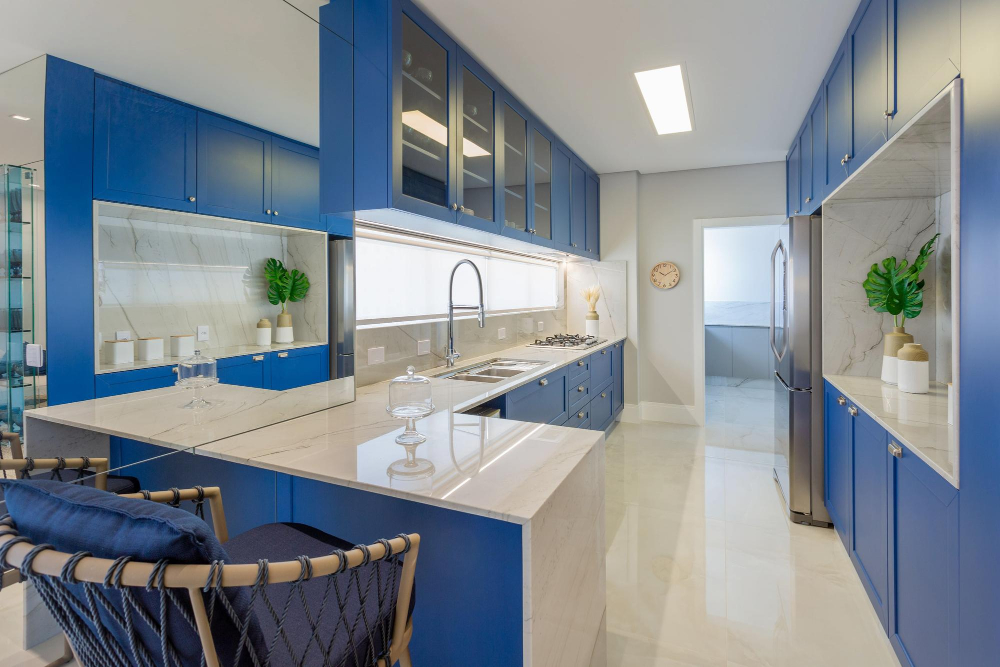
Let’s take a closer look at some of the pros and cons.
Pros:
- Durability: Polished porcelain tiles are incredibly durable, making them an excellent choice for high traffic areas such as kitchens.
- Stain Resistance: Porcelain tiles are highly resistant to stains, which is essential in a kitchen where spills can happen frequently.
- Scratch Resistance: The hardness of polished porcelain makes it difficult to scratch or damage the surface easily.
- Aesthetics: With many design options available in various colors, patterns, sizes, shapes – you can create unique looks that complement your kitchen decor.
Cons:
– Slippery Surface: Polished surfaces tend to be slippery when wet. This could pose a risk if you have young children or elderly people living with you who may slip on the floor accidentally.
– Installation Challenges: Installing polished porcelain tile requires specialized tools and skills; hence it’s not recommended for DIY projects unless one has prior experience working with this type of material.
– Cost Considerations : While there are affordable options available in the market today; generally speaking ,polished porcelains tend to be more expensive than other types of flooring materials such as vinyl or laminate floors.
Alternatives to Polished Porcelain

If you’re looking for alternatives to polished porcelain tiles, there are several options available in the market that can provide similar benefits.
One alternative is ceramic tile. Ceramic tiles are made from natural clay and come in various colors and designs.
They offer excellent durability, stain resistance, and easy maintenance at an affordable price point.
Another option is luxury vinyl flooring (LVF). LVF mimics the look of natural materials like wood or stone but offers better durability than traditional hardwood or stone flooring options.
It’s also waterproof and easy to clean.
If you prefer a more eco-friendly option, bamboo flooring could be an excellent choice as well. Bamboo has become increasingly popular due to its sustainability factor while providing high levels of strength and durability comparable with hardwoods such as oak or maple.
Final Thoughts

It is durable, easy to maintain, and comes in a variety of styles and designs. However, there are also some drawbacks to consider such as its weight during installation or potential slipperiness when wet.
Ultimately the decision on whether or not to use polished porcelain tile for your kitchen floors will depend on your personal preferences and needs. If you prioritize durability over everything else then it may be worth investing in this type of flooring material.
However if you’re looking for something more affordable or environmentally friendly then there are other options available too! Whatever choice you make just remember that with proper care any flooring can last a long time so choose wisely based on what matters most to YOU!
FAQ
Can you use polished porcelain tile in a kitchen?
Yes, you can use polished porcelain tile in a kitchen as they are hard-wearing and resistant to wear and tear, making them suitable for busy areas.
Is polished porcelain tile slippery in kitchen?
Yes, polished porcelain tile is slippery in a kitchen due to its highly slippery texture resulting from the polishing process.
What are the disadvantages of polished porcelain floor tiles?
The disadvantages of polished porcelain floor tiles include their occasional chipping, particularly around the edges, and higher cost compared to ceramic and other popular flooring materials.
Can I put polished tile in kitchen floor?
Yes, you can put polished tile on the kitchen floor, as they are resistant to staining and don’t soak up water, making them suitable for both bathrooms and kitchens.
How does polished porcelain tile hold up against heavy foot traffic in a kitchen?
Polished porcelain tile holds up well against heavy foot traffic in a kitchen due to its durability and low maintenance properties.
How do you maintain the appearance and cleanliness of polished porcelain tiles in a kitchen?
To maintain the appearance and cleanliness of polished porcelain tiles in a kitchen, use a soft-bristle broom, a damp, clean cloth, and a pH-neutral cleaning solution to regularly sweep and mop the surface.
Are there any alternative floor tile options to consider for a kitchen when comparing to polished porcelain tiles?
Alternative floor tile options for a kitchen include ceramic, natural stone, and vinyl tiles, providing a variety of choices compared to polished porcelain tiles.
Continue reading:
